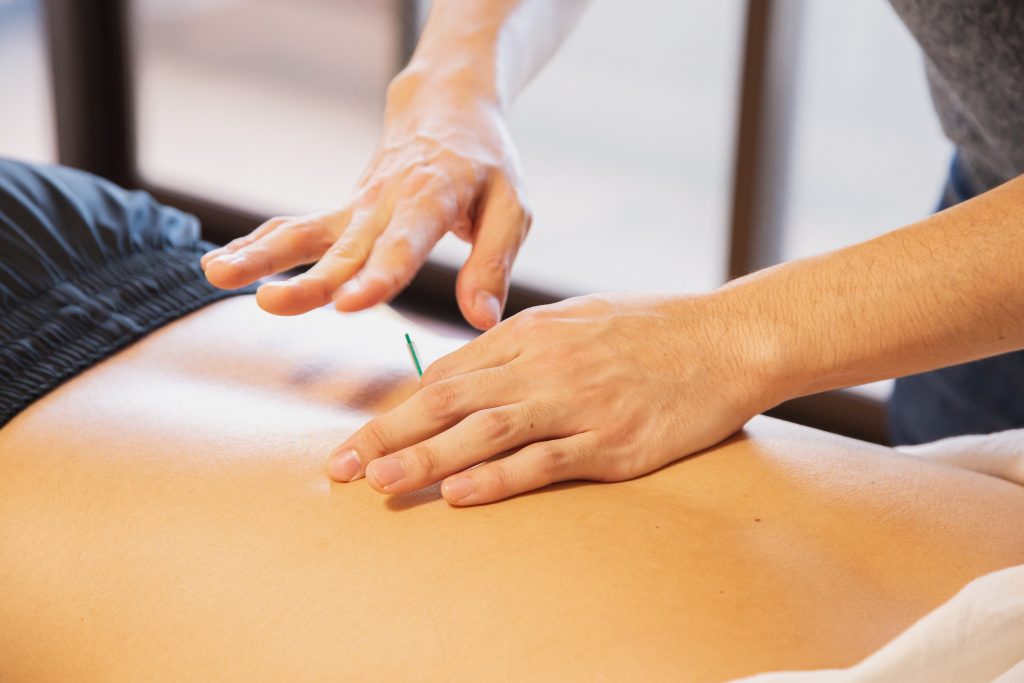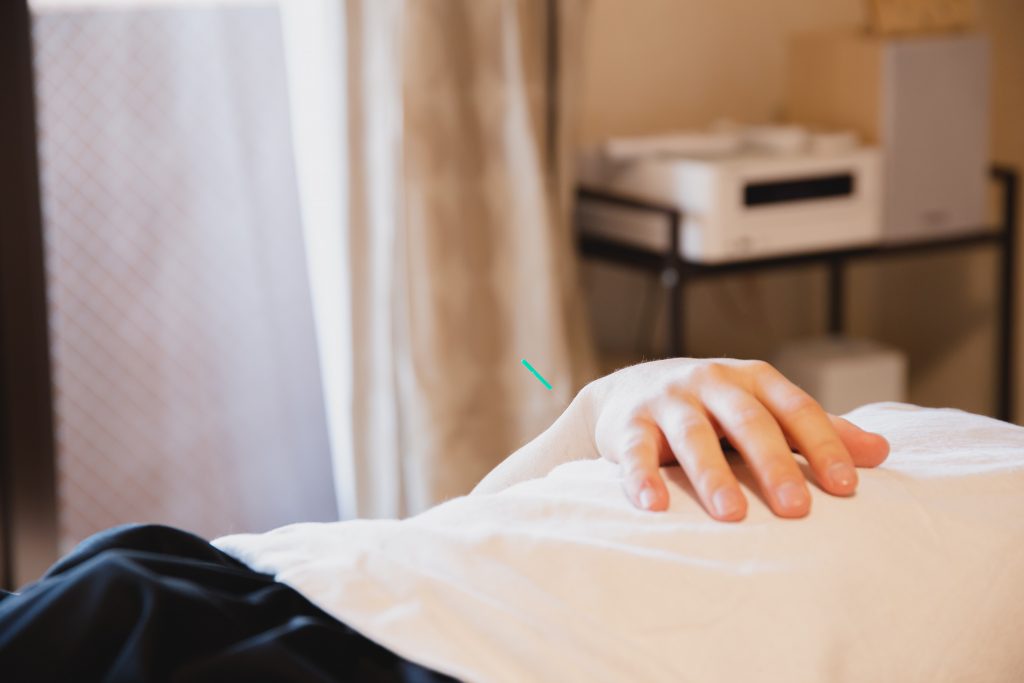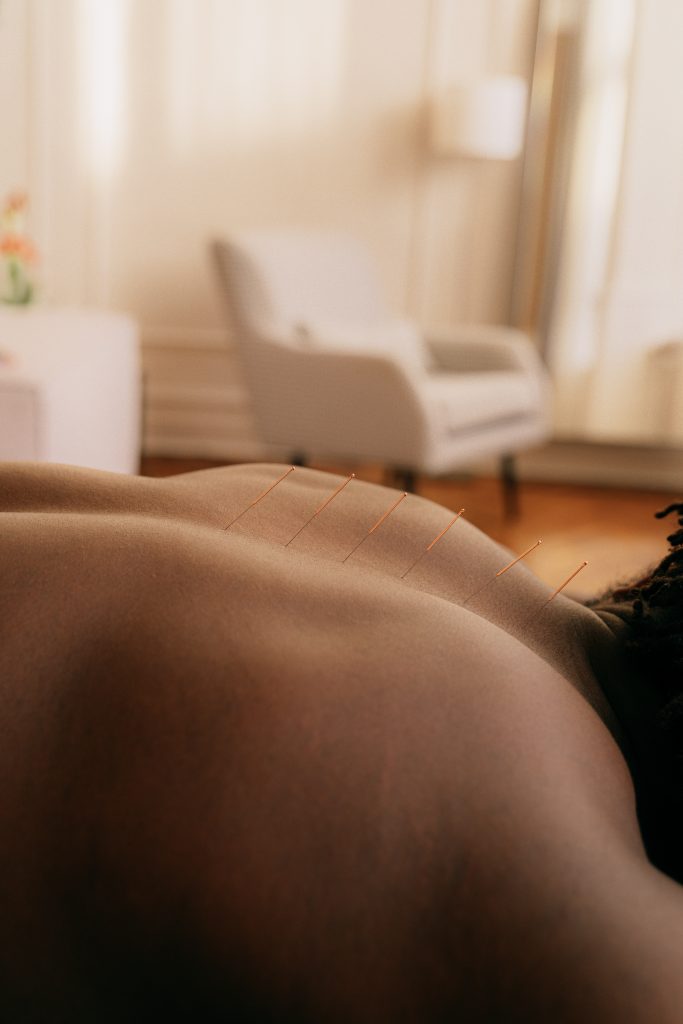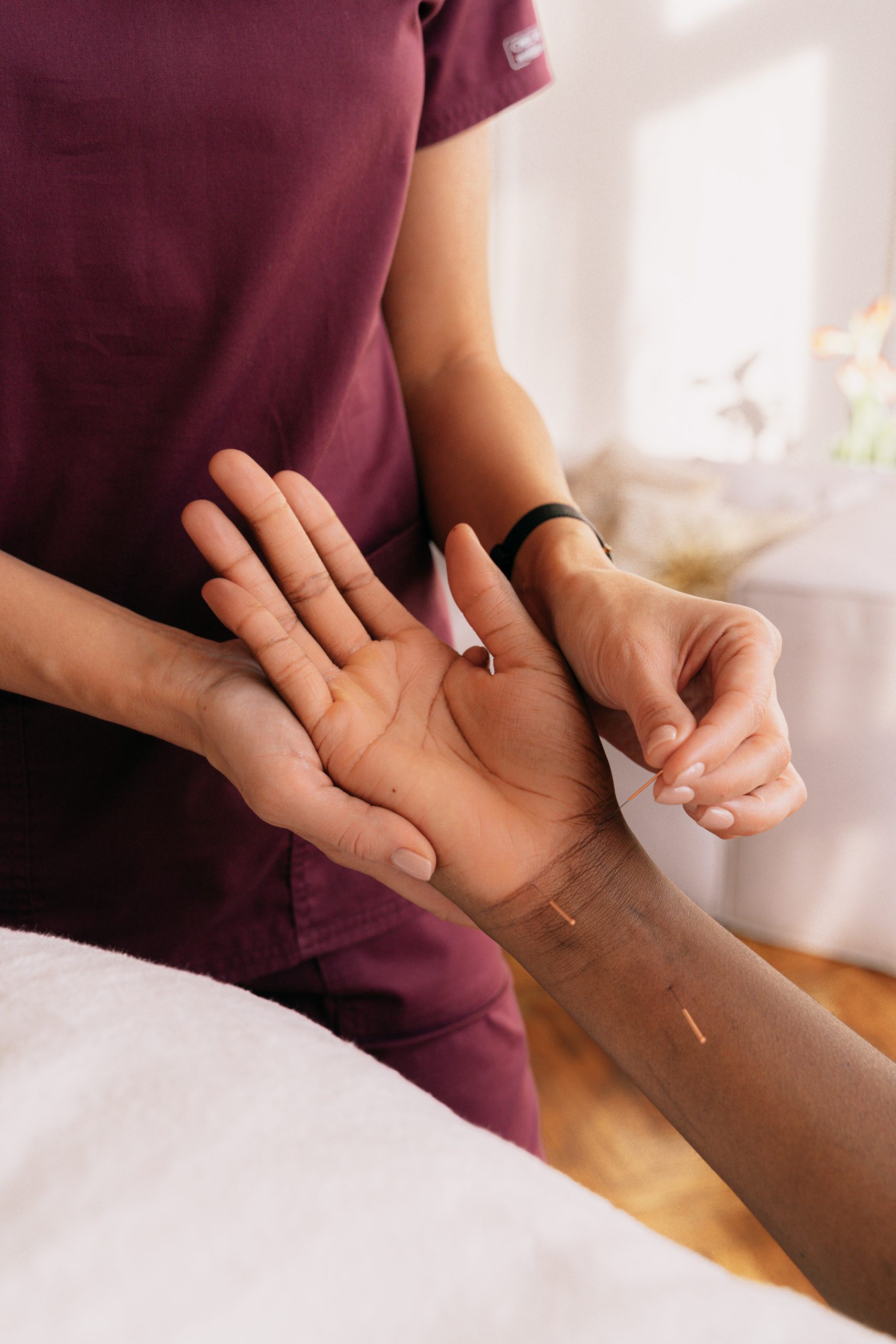What is acupuncture?
At W5Physio our physiotherapists offer western medical acupuncture and dry needling which looks very similar to traditional Chinese acupuncture. Needles are inserted in various places in the body including hands, feet, and face, then agitated at intervals before being taken out after anywhere between 5 and 30 minutes later.
There’s a considerable difference between Western Acupuncture and traditional Chinese acupuncture. The Western approach relies on making a medical diagnosis in a conventional way to identify and target specific structures that are in need of treatment. Needles are then used to influence the physiology of the body while also using other physiotherapy interventions like manual therapy, and graded exercises concurrently.
This ensures we’re treating the patient holistically to can manage their condition. Acupuncture in physiotherapy is used as an additional treatment to help us achieve the best possible outcome for a patient’s condition, rather than as a standalone treatment.

There are a few mechanisms that go towards explaining the effects that acupuncture needles have on the body’s systems, which can explain why patients feel a decrease in their symptoms following a session. They include:
- Local effects – Acupuncture stimulates nerve fibres in the skin and muscle. On needling, nociceptive afferents are stimulated and release vasodilatory neuropeptides into the muscle and skin. They innervate neuropeptides such as calcitonin gene-related peptide and substance P are released which locally create an effect known an axon reflex. This causes local blood vessels to dilate thereby increasing blood flow. You can see this in patients where the skin around the needle flushes red. Blood flow is also increased in deeper tissues which can encourage healing.
- Segmental Analgesia – The action potentials also travel up the nerve to its segment in the spinal cord where it depresses activity in the dorsal horn which reduces that areas response to painful stimuli. This is the main mechanism by which acupuncture relieves pain (the most common symptom acupuncture is used to treat in western medicine)
- Extra segmental Analgesia – From the dorsal horn these action potentials can travel to the brain stem to stimulate the bodies pain supressing mechanism. This can result in the effects of the acupuncture extending to the whole body not just the area being treated. However, this effect is not usually a particular powerful effect.
- Central regulating effects – The action potentials influence various other structures in the brain. One being the cerebral cortex where the sensation of the needle is registered. Other structures stimulated include the hypothalamus and limbic system and pituitary gland. The release of B- endorphin and ACTH from the pituitary gland into the bloodstream and cerebrospinal fluid produce system wide pain relief. ACTH also activates the adrenal gland to release cortisol which is a naturally occurring steroid substance with anti- inflammatory properties into the bloodstream.
What does acupuncture feel like? / Does acupuncture hurt?
Acupuncture needles are extremely thin, so most people feel a slight pinch as the needle enters the skin but not much pain past that. You may feel a warm sensation or tingling sensation around the area of the needle. In cases where a needle is placed in a very tense muscle you may feel a contraction of the muscle fibres around the needle – this is an odd sensation rather than a painful one.

What type of conditions does acupuncture treat?
While acupuncture can be used to treat a varied number of medical conditions, at W5Physio, we use acupuncture and dry needling as an add-on to the treatment of varied musculoskeletal conditions, and in conjunction with other various physiotherapy techniques.
Can acupuncture needles be placed anywhere on the body?
When using medical acupuncture techniques, we use traditional acupuncture insertion sites as well as muscle trigger point sites to place the needles. Positioning of the needles is determined by the physiotherapists assessment of your condition and the area needed to be treated and will vary from patient to patient.
How will I feel after acupuncture?
Some people may feel some post treatment pain associated with the needles at the site of the insertions. Occasionally, people also report feeling tired, dizzy, or nauseous after a session. However, all these symptoms tend to only last for a very short time.

How long does it take to feel the benefits of acupuncture?
Most people will feel a reduction in their aggravating symptoms and pain instantly following treatment. Some patients experience a mild bruising pain/sensation around the area of the needles which can take up to two days to dissipate. However, to get the full benefit from acupuncture it’s advised that you have consecutive sessions over a few weeks along with other physiotherapy interventions. Your physiotherapist will discuss this with you and put together a plan of treatment to best suit your condition and symptoms.
Are there any side effects to acupuncture?
The risks and side effects to acupuncture are very low if you have a certified, competent practitioner. Some people experience mild short term side effects such as:
- Pain at the site of needles
- Bruising or some bleeding where the needles punctured the skin
- Drowsiness
- Feeling dizzy or faint
It’s important to communicate with your physiotherapist if you experience any of the above so they can help you manage issues effectively.
How much does acupuncture cost?
At W5Physio we don’t offer acupuncture as a stand-alone treatment. Your physiotherapist will assess you and decide if acupuncture is something that will benefit you. They’ll then use it in conjunction with other physiotherapy treatments to holistically treat and manage your symptoms. Acupuncture is therefore part of your normal physiotherapy treatment with no additional cost.
Interested to know whether acupuncture could work as part of your treatment? Get in touch today to book an appointment with one of our physios.






